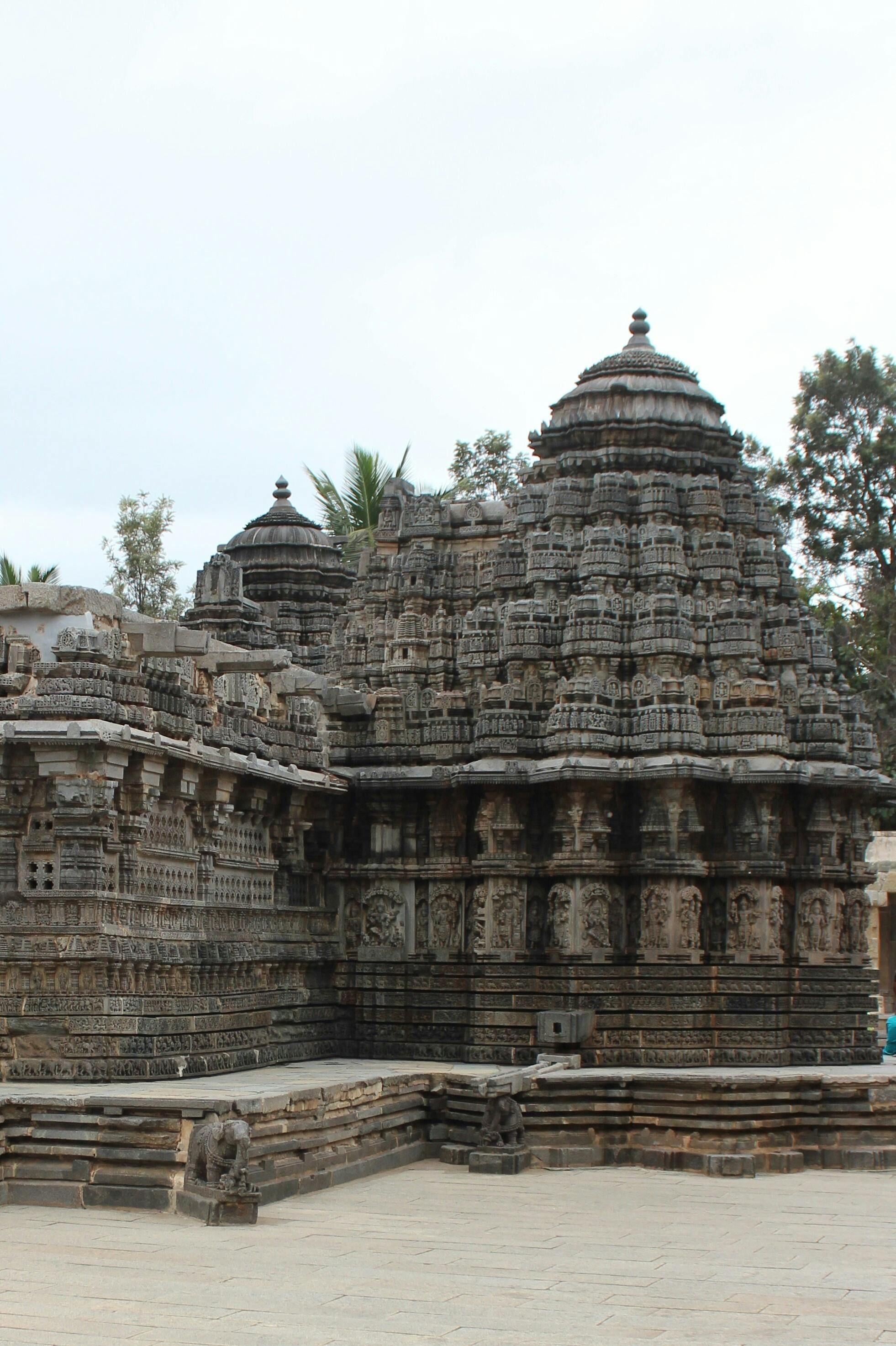Lakshmi Devi Temple, Doddagaddavalli
The Lakshmi Devi Temple, Doddagaddavalli

The Lakshmi Devi temple, located in Doddagaddavalli village in Hassan District, Karnataka, is an early 12th-century Hindu temple complex.
Temple Layout and Deities
The main temple features four shrines that share a common mandapa (hall). Each sanctum is square and aligned to a cardinal direction:
- The eastern shrine houses the Hindu goddess Lakshmi.
- The northern shrine is dedicated to Kali.
- The western shrine is for Shiva.
- The southern shrine is currently empty but was originally dedicated to Vishnu before significant destruction.
The complex also includes a separate Bhairava shrine to the northeast of the main temple, and four small shrines at the corners within a nearly square prakara (compound). All nine temples are constructed in the pyramidal North Indian Nagara shikhara style, likely showing influence from Maharashtra. The complex also has additional smaller shrines.
Location and Date
Doddagaddavalli was historically known as Gadumballi in ancient inscriptions. It is located approximately 20 kilometers (12 miles) northwest of Hassan city, about 16 kilometers (10 miles) south of Halebidu, and roughly 25 kilometers (16 miles) southeast of Belur (NH 373). The temple stands on the south side of the modern village, on the banks of a historic water reservoir. The Lakshmi Devi temple was constructed in 1113 CE by a wealthy merchant, Kalhana Ravuta, and his wife, Sahaja Devi, during the reign of the famous Hoysala King Vishnuvardhana.
Architecture
The temple complex is enclosed within a seven-foot-high praakara (compound), almost a 115-foot square. It originally had a dwara-mantapa to its west and a dwarashobha to its east, but these, along with the original compound decoration, are now missing, save for the door frames and a mantapa-like structure. It is probable that the original town was situated near the manmade reservoir. Inside the historic praakara, there were four small shrines at each corner, a design known as parivaralayas in Sanskrit texts. Additionally, to the northeast of the main temple, an independent fifth shrine is dedicated to Bhairava. At the center lies the chatushkuta (four-shrine) main temple with a shared mantapa. Thus, the entire complex comprises nine shrines.
The Lakshmi Devi Temple is one of the earliest known temples built in the Hoysala style. The primary building material used is Chloritic schist, commonly known as soapstone.
The temple does not stand on a jagati (platform). Three of the vimanas (shrines) share a common square mantapa (hall). The fourth vimana, located to the north and dedicated to Kali, connects to the mantapa via an oblong extension. This extension features two lateral entrances into the temple, one from the east and the other from the west. The vimanas retain their original phamsana-style towers (superstructure) intact, showcasing the Kadamba Nagara architecture. Of the nine shrines in this complex, eight vimanas are simple phamsana and symmetrically designed within each set. The ninth vimana, which opens to the east, is distinct; it has a tritala (three-story) superstructure and is dedicated to goddess Lakshmi, making her the primary deity and giving the temple its name.
Each of the three vimanas sharing a mandapa has an ardha-mantapa (vestibule) connecting it to the central, larger square ranga-mantapa. Above the vestibule of each shrine is a sukanasi (or "nose," resembling a low extension of the main tower over the shrine). The sukanasi is one tier lower than the main phamsana tower above the shrine. All four sukanasi are intact, as are the kalasha (decorative water pot-like structure) atop the main towers. The Hoysala emblem (a sculpture of a legendary warrior "Sala" fighting a lion) is mounted atop one of the Sukanasi.
The mantapa is open and square. Both it and the extension to the Kali shrine feature jali (perforated stone screens) that allow light into the temples. The ceiling of the main hall is supported by eighteen lathe-turned pillars. Near Kali's shrine, there is a stone statue of an emaciated, skeleton-like goblin (vetala), serving as a reminder of her terrifying fierceness and power to inflict death.
According to art critic Gerard Foekema, the temple as a whole exhibits pre-Hoysala architectural elements. There is only one eave running around the temple where the main towers meet the wall of the shrine. At the base of the wall of the shrines are five moldings. However, between the moldings and the eaves, the usual panels of Hoysala sculptures depicting Hindu gods, goddesses, and their attendants are absent. Instead, this entire space is occupied by decorative miniature towers on pilasters (known as aedicule).
The main shrine, facing east, features a 3-foot-tall (0.91 meter) image of the goddess Lakshmi with an attendant on either side. The image holds Vishnu's iconic items: a conch in the upper right hand, a chakra (discuss) in the upper left, a rosary in the lower right, and a mace in the lower left. In the shrines facing north, south, and west, respectively, are images of Kali (a form of Durga), the god Vishnu, and Boothanatha Linga (the universal symbol of the god Shiva). A sculpture of Tandaveswara (dancing Shiva) is present in the circular panel at the center of the ceiling of the mantapa. Other notable artworks include those of Gajalakshmi (a form of Lakshmi with elephants on either side), Tandaveshwara, and Yoganarasimha (avatars of Vishnu) found on the temple's doorway.
